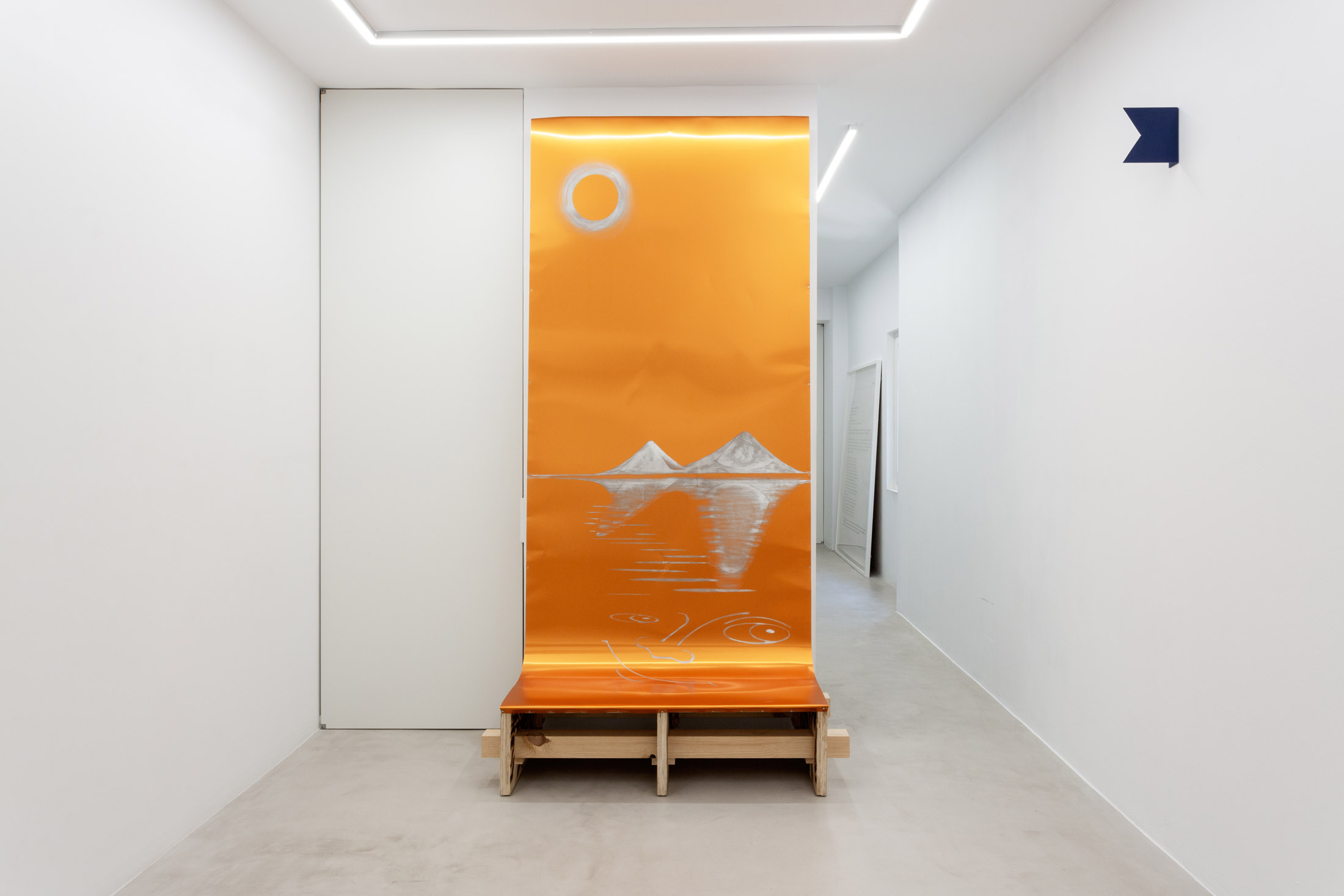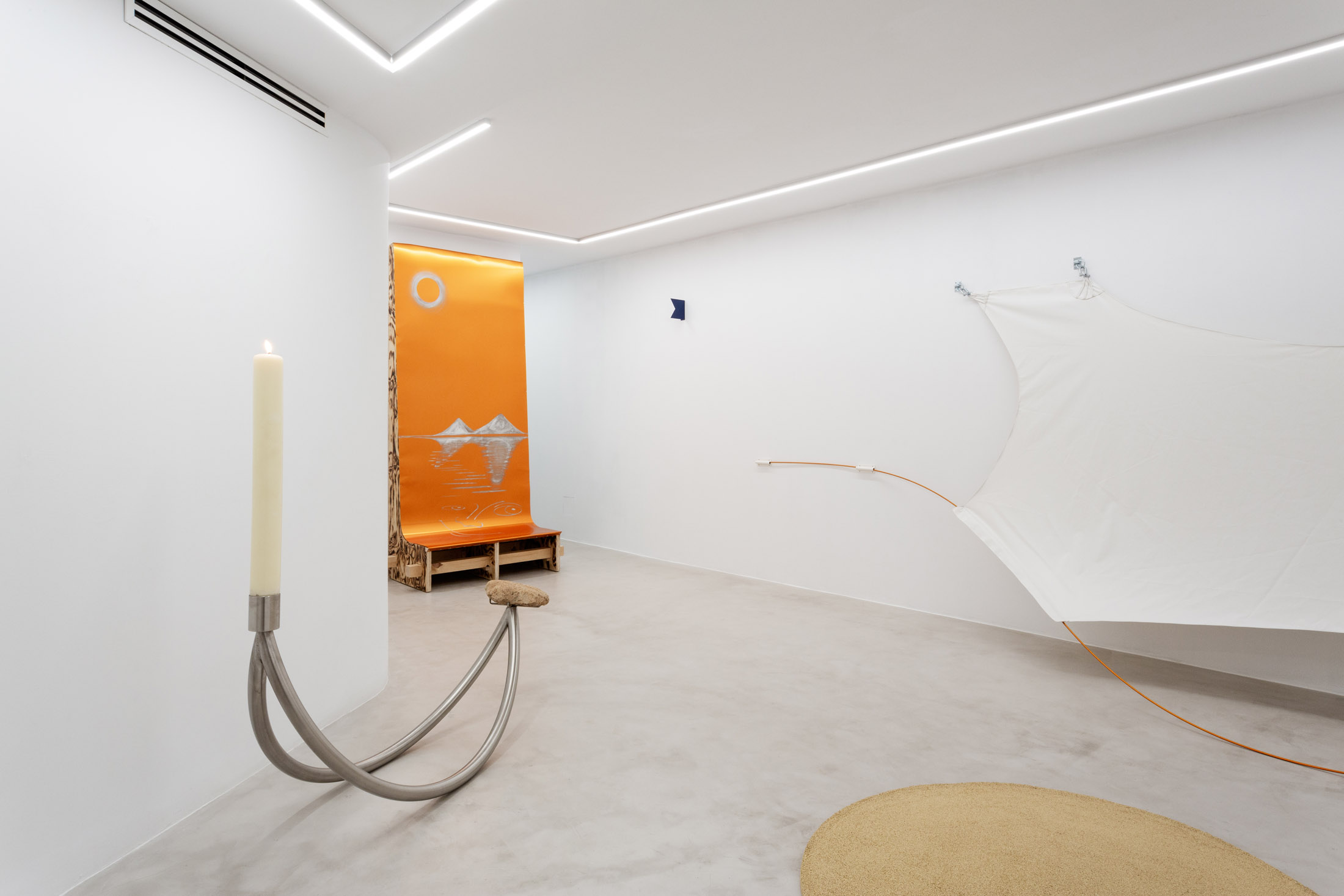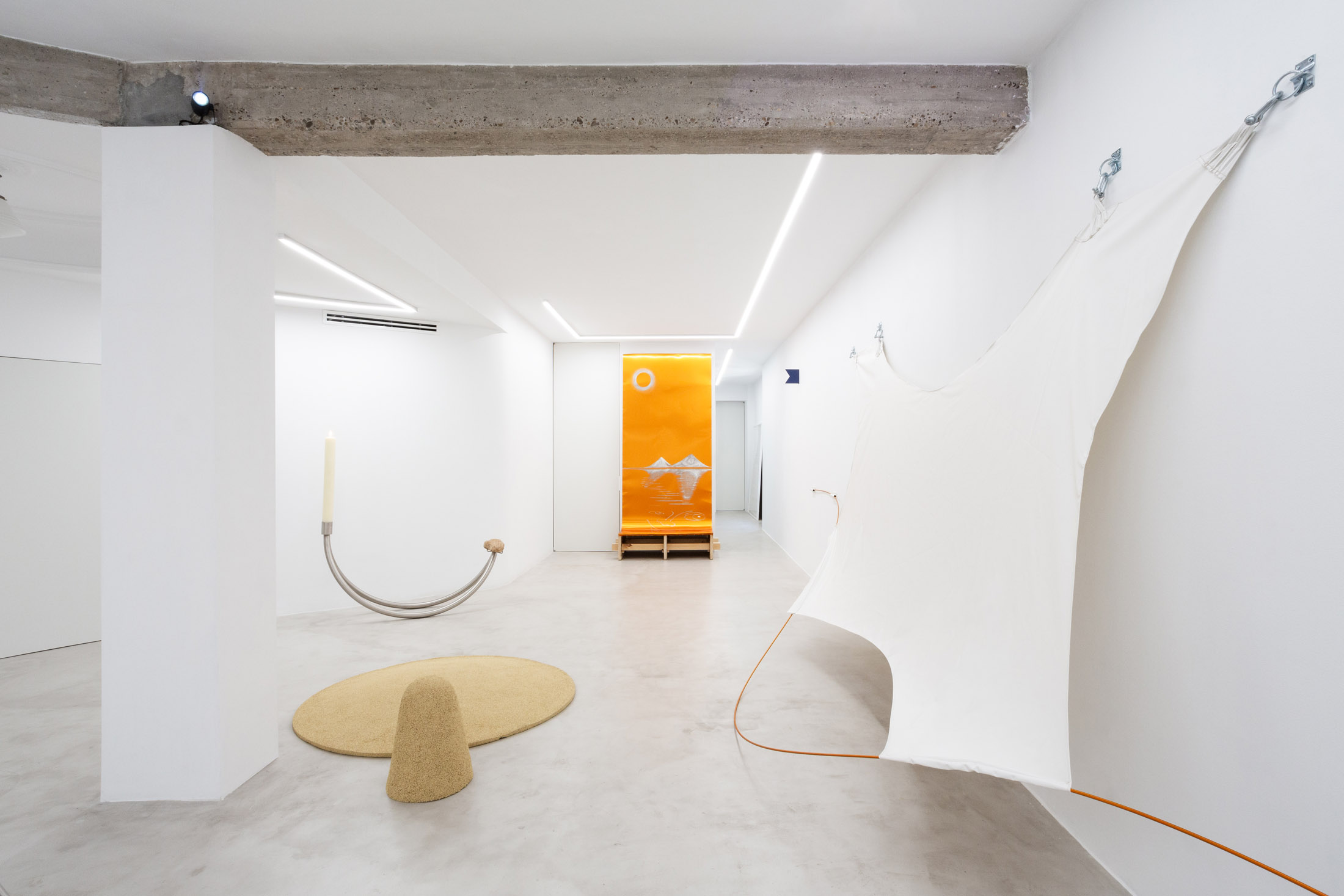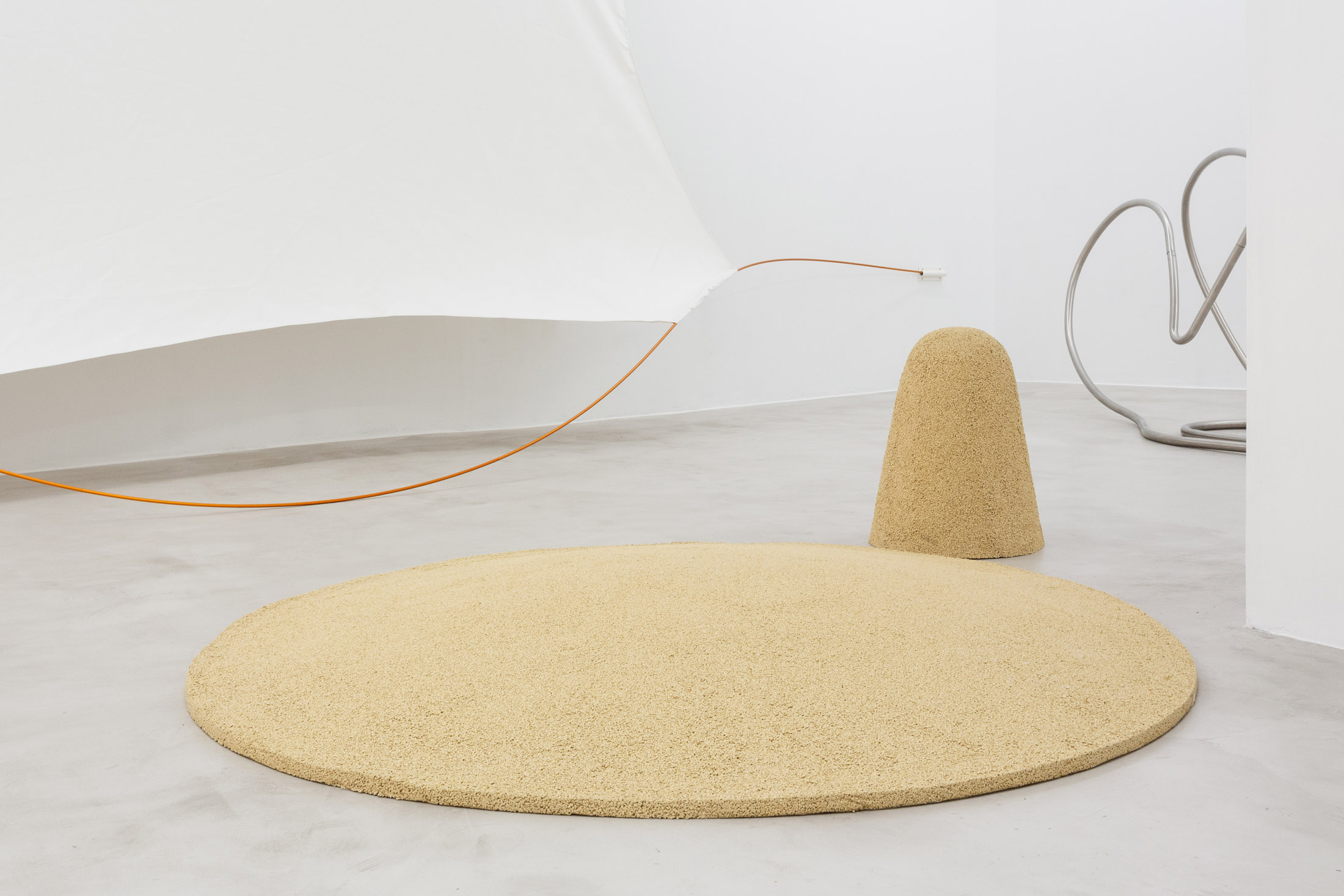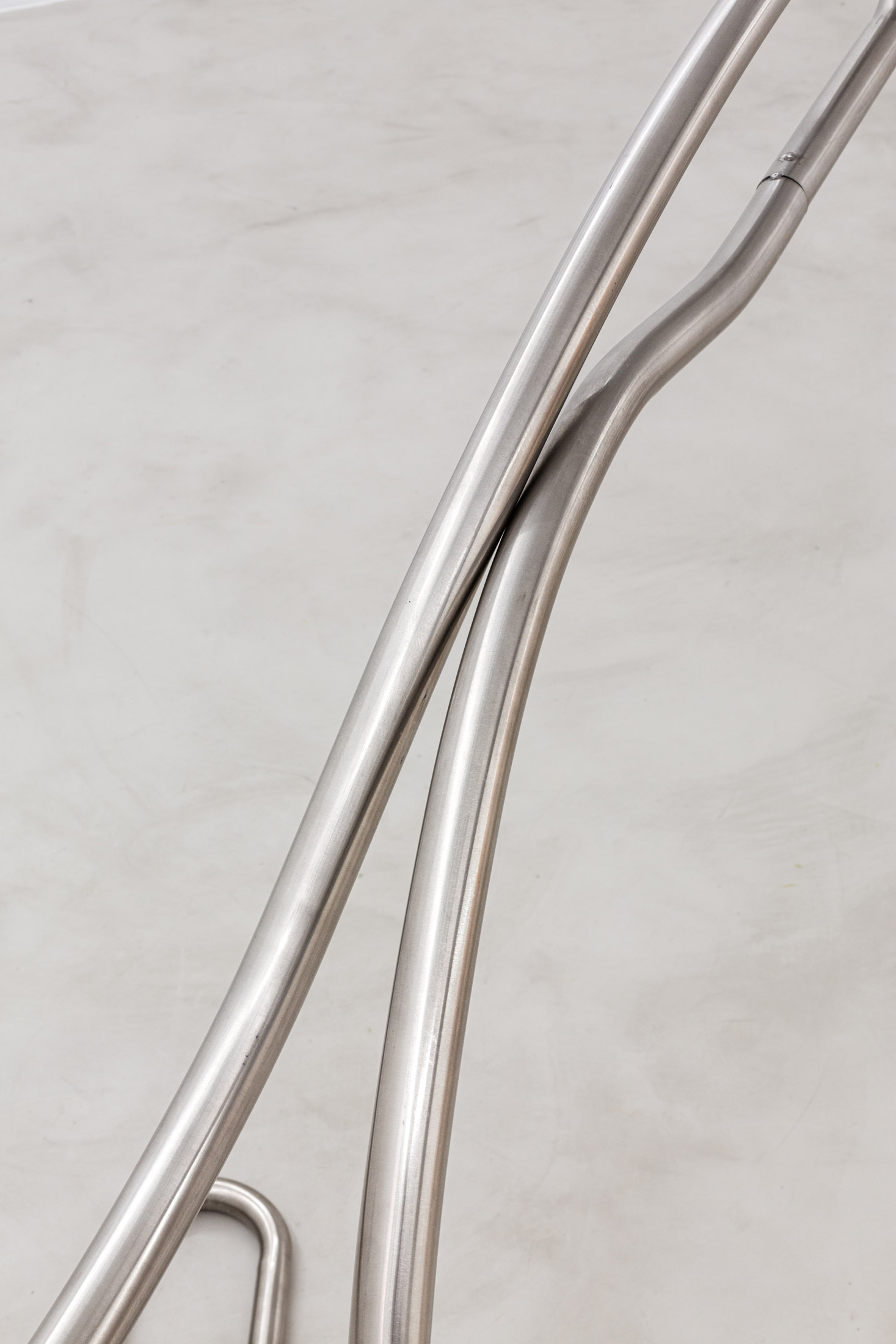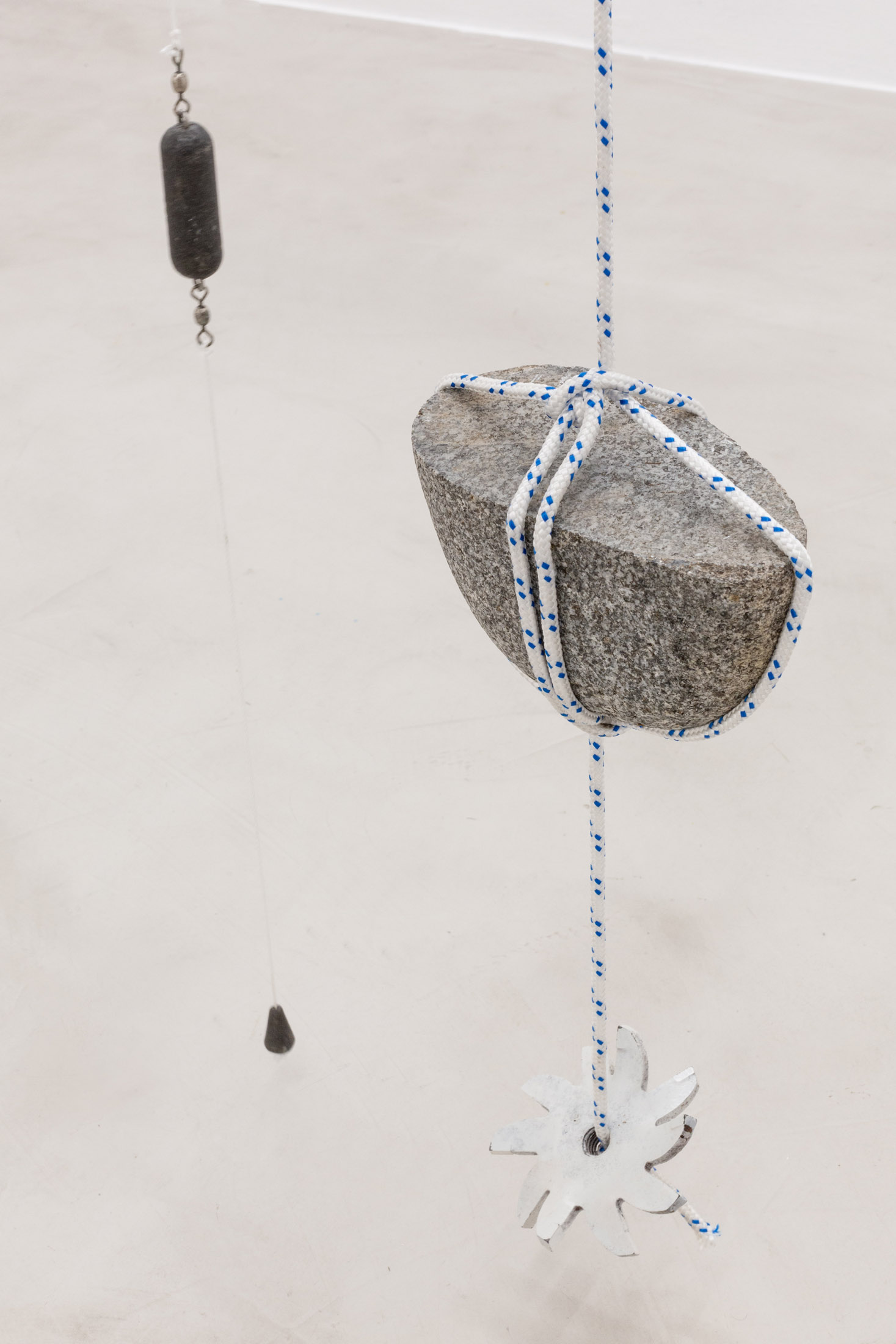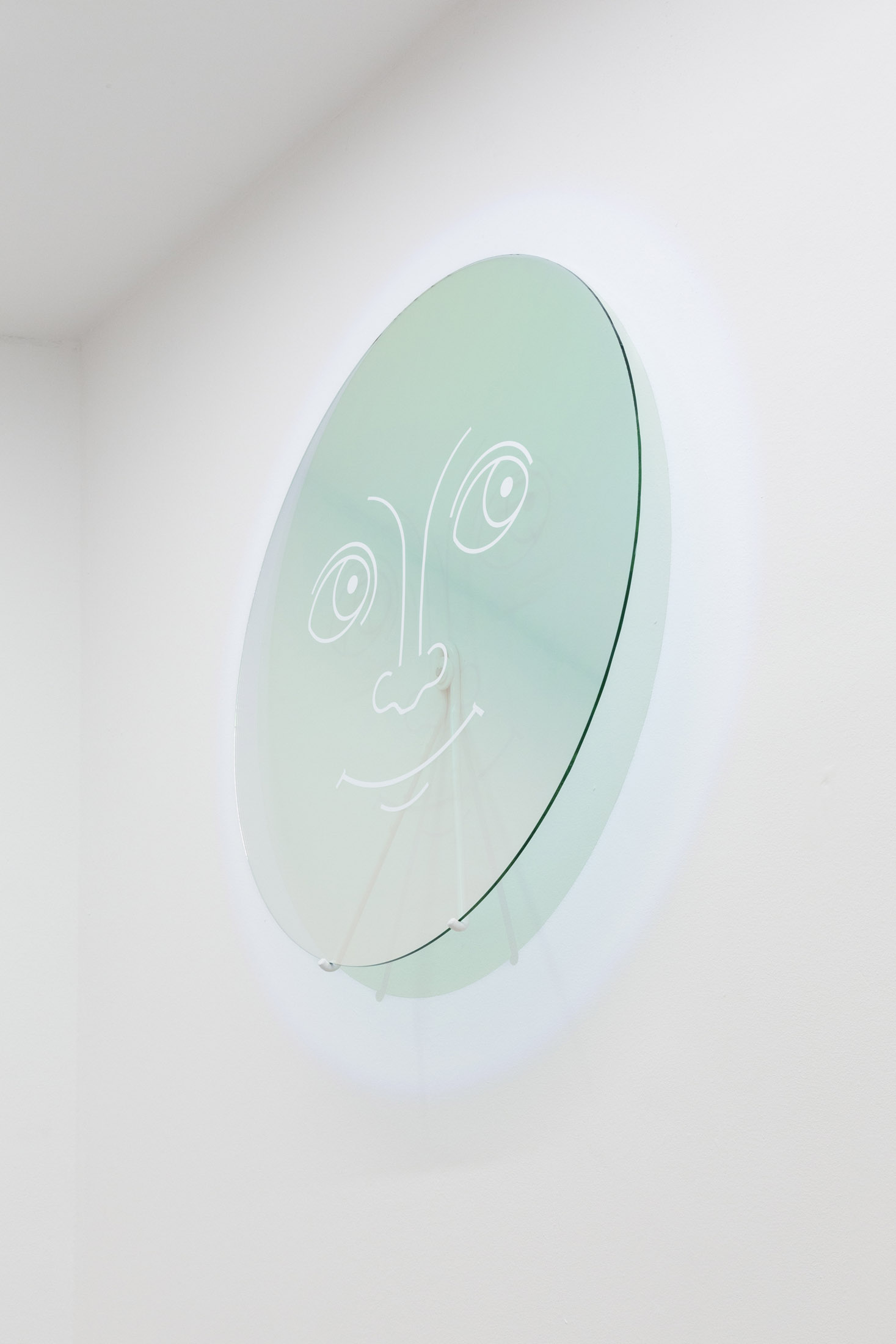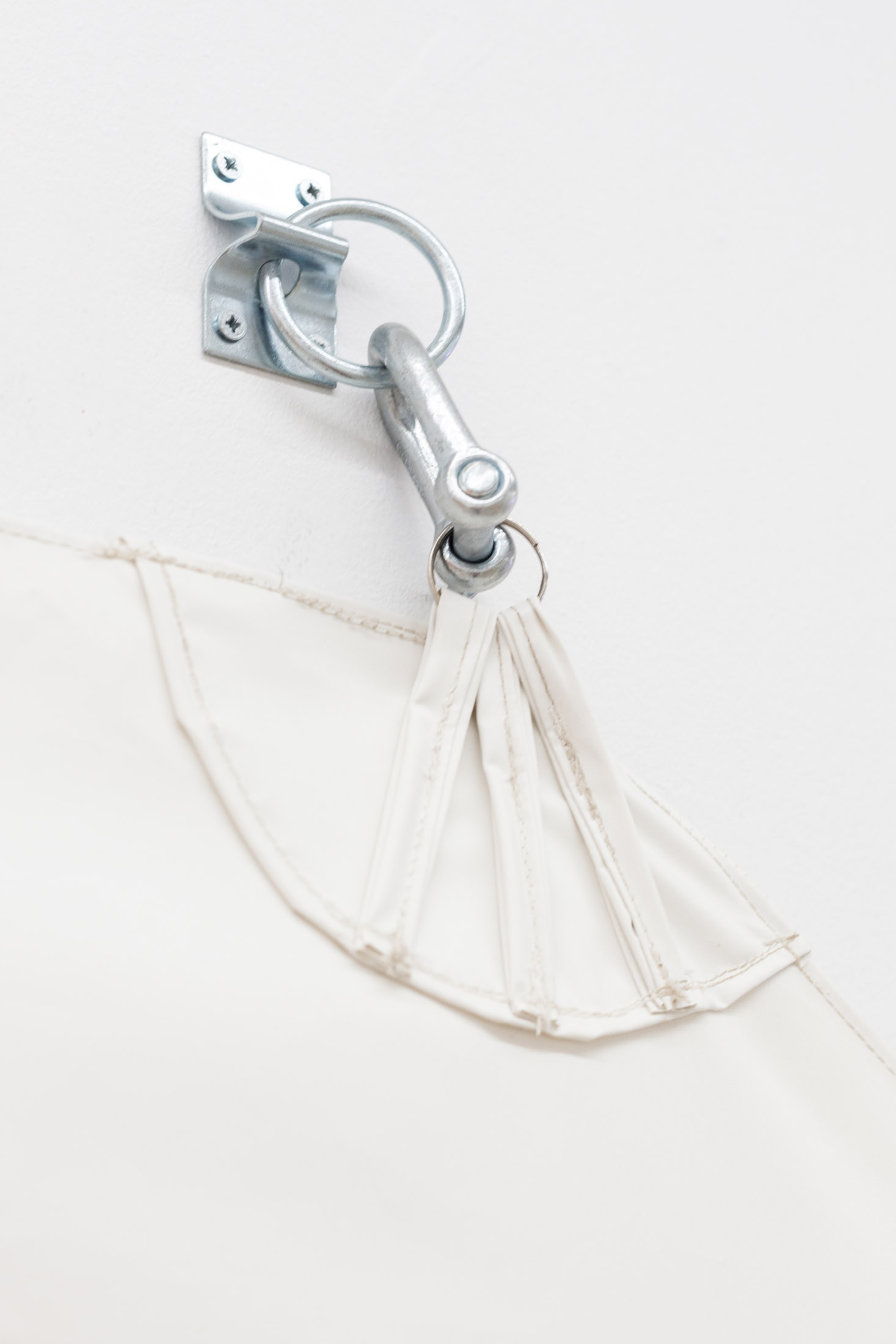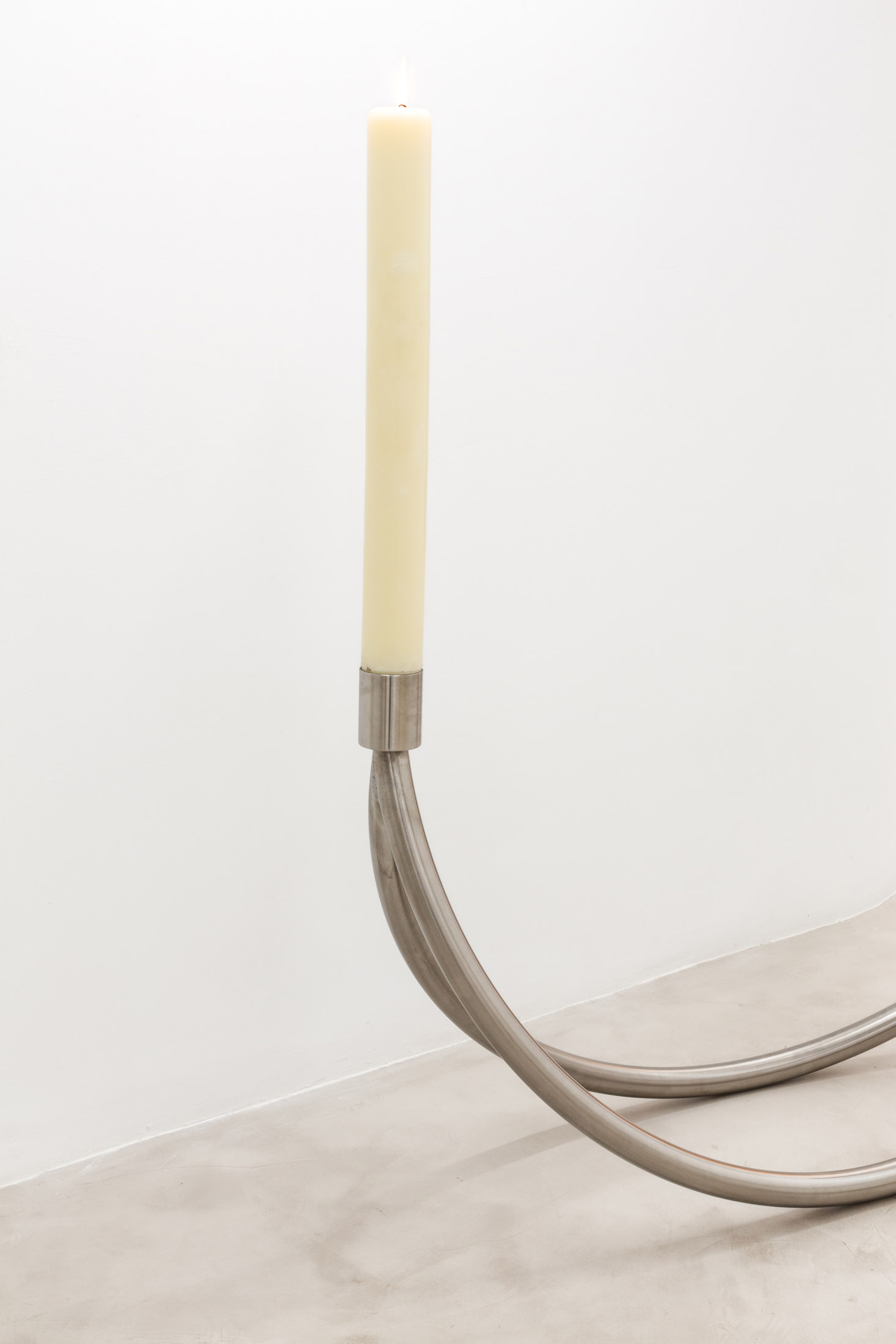Artist: Ovidi Benet
Exhibition title: ¡Hombre al agua!
Venue: House of Chappaz, Valencia, Spain
Date: September 22 – December 28, 2023
Photography: all images copyright and courtesy of the artist and House of Chappaz, Valencia
THE OUTBREAK OF EXTINCTION
“He who has begun to glimpse the magnitude of the order of the world and its laws easily loses his own little self.”
Sigmund FREUD, Leonardo da Vinci, A Childhood Memory, 1910
“It’s only real if I make it
So I make it
I make it unreal”
Hayden THORPE, Material World, 2021
The subject is doomed to suffer a constant paramnesia if he intends to confront his experience of the world, a sensation that has become more acute with the amplification of the stimuli received daily. Thus, when everything is possible, there is nothing to hold on to.
In 1999, in an atmosphere surrounded by stupor and ghosts in the face of a change in the calendar, David Cronenberg’s eXistenZ is released, an exercise in free fall through the fabric of reality. Allegra Geller and Ted Pikul immerse themselves in a video game that leads them to constantly question whether their surroundings are authentic. The notion, posed by Baudrillard in Simulacrum and Simulation (1981), of models of the real that do not originate in reality is repeated throughout the film, leading the characters to touch the objects around them constantly; this search for sensation and a hold on the material leads them to a haptic knowledge that is as flawed as that of the surrounding visuality.
This wandering through an environment that gives them no guarantee that their perception and memories are real leads them to a new reality, a final screen in which eXisteZ, the name of the game, is actually a creation of tranCendenZ.
“(…) memory remains a collective and lived practice, a form of traffic between past and present, tactility and materiality. Memory is not articulated through objects, but with objects, in the same way that Benjamin thinks of history as an experiencing with the past.”
Maurizia BOSCAGLI, Stuff Theory. Everyday Objects, Radical Materialism, 2014
If we had to point out another constant throughout the film’s footage, in this evolution from existence to transcendence, it would be that of violent opposition to anyone who transforms reality or the way of perceiving it. Practically all modern utopian movements, those born since the eighteenth century, have had that transforming will and have been intertwined with art. But the utopian feeling of these individuals should not be detached from their own personal experiences and sensibilities.
The creation of other ways of life must be linked to a whole experiential process that leads the subject to desire a change in his or her immediate environment that contaminates the rest of the surrounding spheres.
The construction of utopian artistic imaginaries is what leads to a rethinking of the ‘utility’ of art and a critique of the supposed ‘neutrality’ of the formalization of the objects with which we coexist.
“A cultural object loses its power once there are no new eyes that can look at it.”
Mark FISHER, Capitalist realism Is there no alternative? 2009
The violence, physical or symbolic, that arises as opposition to change can be generated in the very conception of these changes. When, at the beginning of the 20th century, public spaces dedicated to children’s play began to be conceptualized, the first thing that was done was to separate them from natural areas or those intended for adult enjoyment. This fact is even more striking if we take into account that one of these ideologists was the American landscape architect Charles Downing Lay who in 1912 enunciated the playground as a place with organized games in order to accommodate “a large number of children having fun in a small space” looking for the comfort of their mothers. These spaces should be independent of playgrounds.
The segregation of childhood experience provides an understanding of spaces as alien, play is the way to internalize the mechanisms of social control. Play not only educates our ways of behaving and inhabiting space, but also our aesthetic sensibility or our class positioning. It is not surprising that the avant-gardes (Klee, Picasso, Calder, Torres García…) include the design of game objects as a formula to generate new artistic sensibilities.
There used to be nothing, nothing but boys
Some unchained distortion, that truly annoyed
And this old sequence, of infrequent sounds
In my existence, kept running around
GUSGUS, Crossfaded, 2014
Around 1926 Margaretha Reichardt, a member of the Bauhaus, created the forerunner of modern dolls. These designs, inspired by Oskar Schlemmer, insisted on the notion of order and movement. The world should be a dynamic and orderly environment and for this the Bauhaus insists on the search for new forms for art and design, but also in the ways to communicate and educate around them.
Research into the possibilities of techniques and new materials was one of the areas of exploration of the Bauhaus. This search for strategies to transform not only visual reality but also material reality, even as a method of adapting to the needs of representation, had been interrupted by the academic system of the 19th century, which fixed the disciplines, techniques and use of materials, and by an industrial production that disassociated the artist from the traditional alchemical component in his work.
The identification of artistic practice with alchemy is a recurring theme, even more so if we take into account that the alchemist, when entering into a process of alchemical transmutation, ends up becoming the subiectum, that is, the object of that same process.
“I grew up in a world that rejected everything I was, and considered it unfair because (…) I had not chosen to be what I was.”
Édouard LOUIS, Change: method, 2021
The constant search for new forms, materials, utilities or proposals is a way of being otherwise. An affirmation of the subject in the face of a given reality.
Ovidi Benet (1990, Denia) has articulated all his artistic and professional experience in this search for other alternatives, trying to understand our environment and approach it in an ‘other’ way. His work with design forms, both already created and produced ex novo, confronts us with an estrangement before the material reality that surrounds us. His work has always been focused on the search for a haptic knowledge of form without losing sight of visuality, emphasized by the importance of the use of light.
His way of constructing the exhibition space as an installation that, like playgrounds, invites us to incorporate the body as another element of perception is a strategy to rethink our ways of knowing and even remembering. The notion of play and change is crossed by light, real or projected, reminding us that all objects, even the most everyday ones, are loaded with symbols and meanings.
The existence of the material is linked to collective imaginaries that amplify a mythical component. The forms and their arrangement correspond to a story, both personal and universal, in which more than its literalness we must look for its articulation.
To experience the strangeness of the world is to learn to assume it as a field of transformation, one more step in our metamorphosis as individuals.
“Someone said that the ancients believed that light arose from within our eyes and that it was oneself who cast light upon things, and that no matter which way one looked the light from one’s eyes would still fall upon the whole world.”
David WOJNAROWICZ, In the Shadow of the American Dream, 1989
Text:
Eduardo García Nieto
Independent curator and educator



